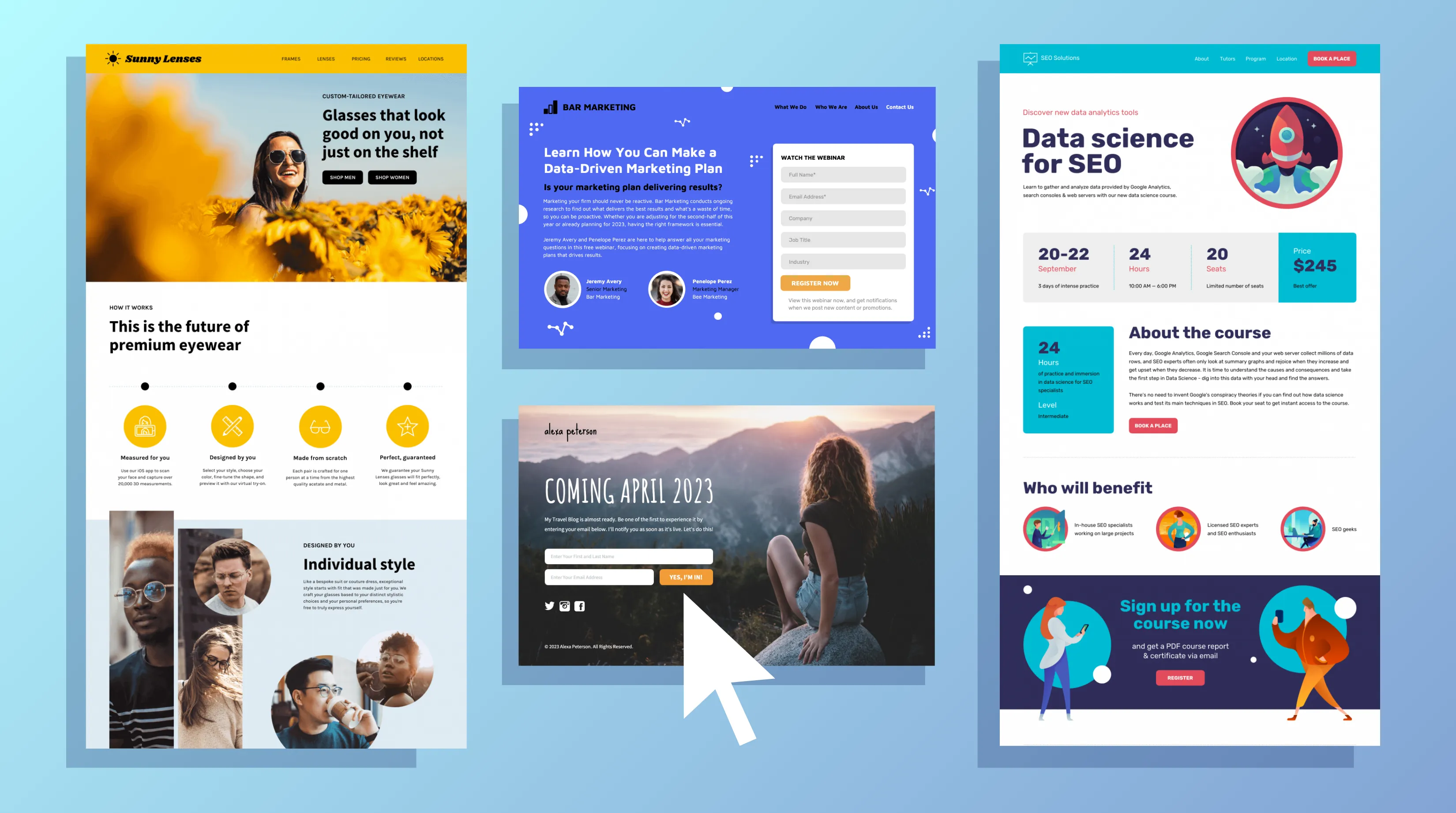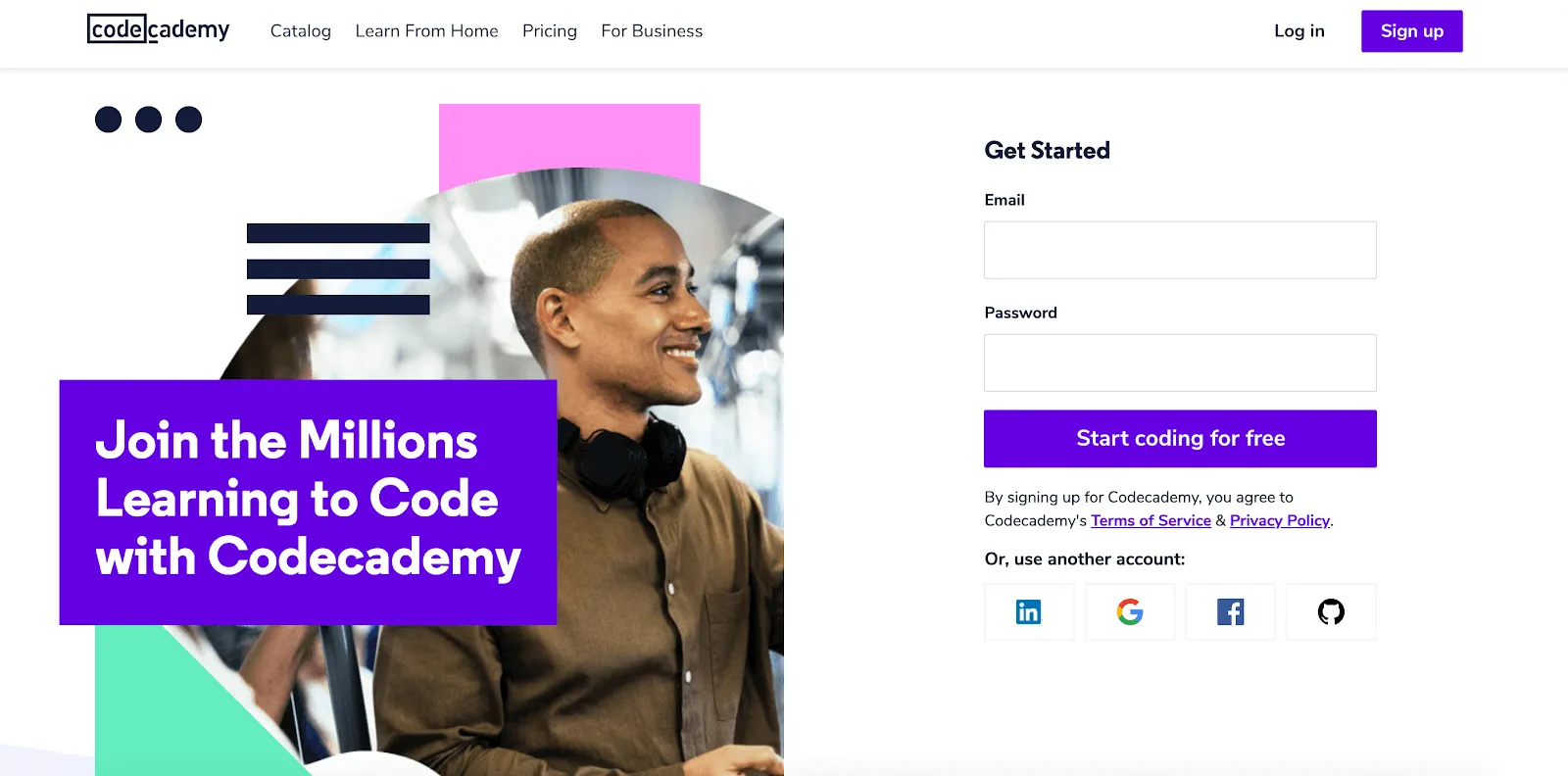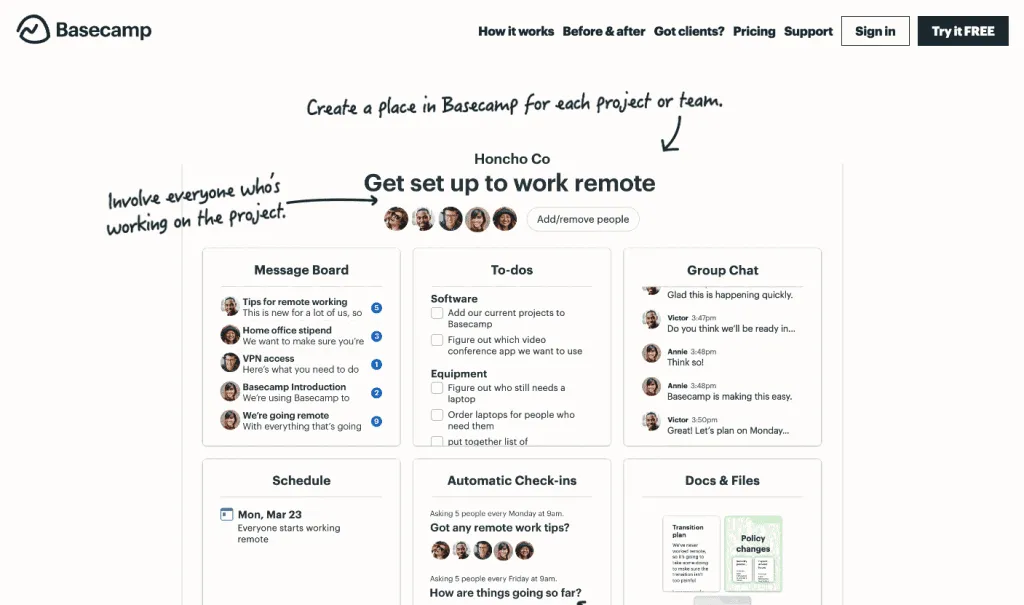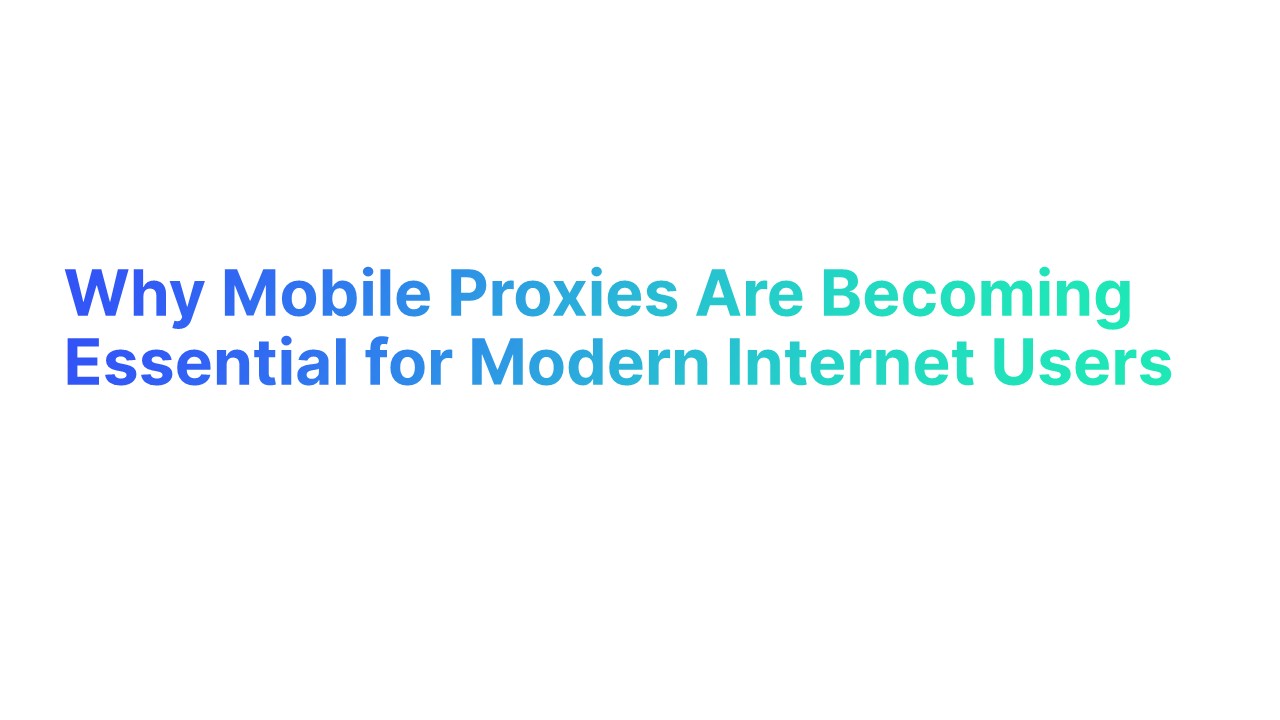Introduction: Understanding the Lead Generation Process

Why Lead Funnel is Essential for Effective Lead Generation
A well-structured lead funnel is not a luxury; it's a necessity.
Let's look at the numbers:
- Businesses with optimized lead funnels experience a 14% higher conversion rate of potential customers into qualified leads.
- A streamlined sales process, guided by a lead funnel, can increase revenue by up to 18%.
So, what makes the lead funnel indispensable?
- Lead Qualification: It helps you sift through the noise to find potential customers genuinely interested in your offerings. These are not just any leads; these are qualified leads more likely to convert.
- Sales Process Efficiency: From the awareness stage to the consideration stage, a lead funnel ensures that your sales team has a structured approach to guiding potential customers through the sales pipeline.
What This Comprehensive Guide Offers
You might ask, "What can this guide do for me?"
Here's what you'll gain:
- Actionable Insights: Step-by-step guidance on building a lead generation funnel supported by data-driven examples.
- High Conversion Rates: Strategies for landing page optimization and email marketing that have been proven to increase conversion rates by up to 25%.
Whether you're a seasoned marketer or a business owner looking to drive more traffic, this guide is your comprehensive resource for mastering the lead funnel.
Decoding the Lead Funnel and Sales Pipeline
What is a Lead Funnel?

A lead funnel is a structured pathway designed to convert website visitors into paying customers.
By understanding the distinct stages of a lead funnel, you can create a more effective lead generation strategy that targets the right audience and converts more qualified leads.
Lead Funnel vs. Sales Funnel vs. Sales Pipeline

Confused about the terms "lead funnel," "sales funnel," and "sales pipeline"? You're not alone. These terms often create a maze of misunderstandings. Let's demystify them:
- Lead Funnel: Primarily focuses on the initial stages, which include attracting potential customers and converting them into marketing qualified leads.
- Sales Funnel: This is an expanded version of the lead funnel. It starts with lead generation and converts leads into paying customers.
- Sales Pipeline: This term is more aligned with the sales process. It tracks the progress of potential customers through various stages, from being a mere contact to a paying customer.
Understanding these differences is crucial for generating leads effectively and optimizing your sales process.
The Importance of a Lead Generation Funnel
"Why do I need to build a lead generation funnel?" you might ask.
The answer is straightforward.
A well-crafted, effective lead generation funnel not only increases the quantity but also the quality of your leads.
These are your qualified leads, more likely to convert into paying customers.
Here's why a lead generation funnel is indispensable:
- Target Audience Alignment: A lead generation funnel allows you to zero in on your target audience. This is crucial for driving traffic to your landing pages and ensuring your advertising efforts aren't wasted.
- Effective Lead Qualification: A lead funnel helps your sales and marketing teams work cohesively. They can set criteria for a qualified lead, ensuring that your sales team only invests time in leads more likely to convert.
- Data-Driven Decision-Making: One of the most significant advantages of a lead generation funnel is the ability to collect data at each stage. This data is gold. It allows you to tweak your lead generation process for better results.
- Conversion Rate Optimization: With a structured lead funnel, you can identify bottlenecks in your customer journey. This lets you make data-driven adjustments, improving your landing page conversion rates and overall sales metrics.
Generating Leads vs. Qualifying Leads
Not all leads are created equal.
Generating new leads, is one thing; qualifying them is another.
Marketing qualified leads (MQLs) have shown interest but aren't ready to buy, while sales qualified leads (SQLs) are further down the funnel and closer to purchasing.
Knowing the difference can help your sales team focus their efforts more effectively.
Target Audience and Potential Customers

Identifying Your Ideal Customer and Target Audience
76% of businesses say understanding the target audience is crucial for an effective lead generation strategy.
So, who exactly is your ideal customer?
Your ideal customer is a marketing qualified lead who has engaged with your content marketing efforts but hasn't yet made a purchase. They fit your buyer persona regarding demographics, pain points, and needs.
Use customer journey maps to collect data on distinct stages from awareness to landing page conversion rate.
By creating a customer journey map, you can identify the awareness stage, consideration stage, and the point where they become paying customers. This is not just a marketing strategy; it's a critical part of your sales process.
Quick Tip: Crafting Your Customer Journey Map
Creating a customer journey map is a crucial step in understanding your target audience and potential customers.
This map outlines the distinct stages a potential customer goes through, from the awareness stage to becoming a paying customer.
Here's how to get started:
- Identify Your Ideal Customer: Use data-driven methods to define your ideal customer profile. This could include age, location, and specific pain points your product or service addresses.
- Map Out Distinct Stages: Break down the buying process into distinct stages. Typically, these might include the awareness stage, consideration stage, and conversion stage.
- Pinpoint Touchpoints: Identify the various touchpoints where potential customers interact with your brand. This could be through social media platforms, email marketing, or your landing pages.
- Analyze Conversion Rates: Use analytics tools to measure how effectively you convert leads at each stage. This will help you identify areas for improvement.
- Iterate: Based on your findings, make the necessary adjustments to your lead generation strategy and sales funnel to better align with your customer's journey.
How to Generate Leads by Knowing Your Potential Customers
According to a recent study, personalized lead generation strategies can increase conversions by up to 19%.
Solution: Qualify potential leads to ensure they match your ideal customer profile.
Once you've identified your target audience, the next stage involves generating leads that are not just numerous but also high-quality.
45% of businesses say outbound lead generation techniques, like paid advertising on social media platforms, yield high-quality leads.
Remember, not all leads are created equal.
A study found that 27% of leads in a typical sales funnel are not qualified.
Therefore, it's crucial to use the best lead generation tools and management tools to track how leads move through your sales funnel and adjust your strategies accordingly.
Lead Magnets and Content Creation

What is a Lead Magnet?
A lead magnet is a valuable offer you provide to your potential customers in exchange for their contact details.
According to HubSpot, 63% of consumers are willing to share personal information in exchange for something valuable.
A well-crafted lead magnet is not just a 'nice-to-have' but a 'must-have' in your lead generation strategy.
Crafting High-Quality Lead Magnets to Generate Leads
Businesses that use compelling lead magnets can increase conversion rates by up to 30%.
Here are a few Examples
- Ebooks and Guides: These are not just long-form blog posts but comprehensive guides that solve a specific problem for your target audience.
- Webinars: These offer real-time engagement and can be repurposed into various content forms later.
- Free Trials: Let your product speak for itself. A free trial can convert a potential customer into a paying customer.
Step-by-Step Guide to Create Content that Drives Organic Traffic
How do you get people to discover your content without paying for ads?
Follow these steps:
- Keyword Research: Before writing a single word, you need to know what your target audience is searching for. Use tools like Google Keyword Planner or SEMrush to find keywords relevant to your business. Aim for a mix of high and low-competition keywords to balance your strategy.
- Create a Content Calendar: Consistency is key in driving organic traffic. Plan your content, focusing on various formats—blog posts, videos, social media posts, etc.
- Craft High-Quality Content: This is where your lead magnets come into play. Create content that solves a specific problem or answers a particular question. Use data to back up your claims and add credibility.
- On-Page SEO: Include your keywords naturally in the title, meta description, and throughout the content. But avoid keyword stuffing; search engines are more intelligent than that.
- Promote on Social Media: Share your content across all social media platforms. According to Sprout Social, social media drives 31% of all referral traffic.
- Email Marketing: Don't ignore this powerful tool. Use it to notify your subscribers about new content.
- Analyze and Tweak: Use Google Analytics to track how your content is performing. Are you reaching your target audience? Are visitors converting into qualified leads? Make data-driven adjustments to your strategy as needed.
The Landing Page Experience

The Role of Landing Pages and Lead Magnets
Landing pages play a pivotal role in capturing leads.
They are the entry points of your lead funnel, designed to convert visitors by offering something valuable in return for their contact details.
According to HubSpot, companies with 30 or more landing pages generate 7 times more leads than those with fewer than 10
Landing Page Essentials - 10 Factors for High Conversion Rates
- Clear Headline: State what you're offering right away.
- Engaging Copy: Keep it persuasive but straightforward.
- Visual Elements: Use images or videos that align with the content.
- CTA Buttons: These should be easy to find and action-oriented.
- Speed: A one-second delay can decrease conversions by 7%.
- Mobile-Friendly: Over half of global web traffic comes from mobile devices.
- Trust Elements: Customer testimonials can increase trust by 34%.
- Form Fields: Keep them minimal to increase completion rates.
- A/B Testing: Continuously test to improve performance.
- Analytics: Use tools like Google Analytics to monitor key metrics.
Each of these elements contributes to the user experience and, ultimately, your conversion rates. For instance, a clear CTA can increase conversions by up to 14%, while trust elements can boost it by 34%.
Driving Traffic and Lead Capture

Utilizing Social Media Platforms and Paid Advertising Efforts
If you're looking to enhance your own lead generation sales funnel, social media platforms are indispensable.
These platforms are more than just social interaction spaces; they're robust tools for lead generation.
A well-executed social media ad can increase your conversion rates by up to 25%.
Challenges and Solutions:
- Low Engagement: If your posts are not getting enough attention, consider revising your content strategy.
- High Costs: Some platforms can be expensive. Balance your budget by also engaging in organic social media efforts.
Here's the how-to: Start by defining your target audience.
Use platform-specific analytics to understand who's engaging with your content.
Next, tailor your advertising efforts to these demographics.
The aim is to convert social media interactions into qualified leads and, eventually, paying customers.
SEO Strategies for More Leads and Higher Conversion Rates
Search engine optimization (SEO) is crucial for driving organic traffic and is a key component of an effective lead generation strategy.
Data shows that 67% of all clicks go to the first five organic results on Google.
Step-by-Step Guide:
- Keyword Research: Use SEO tools to identify high-ranking keywords related to your lead funnel.
- Content Creation: Develop quality content that addresses the needs and questions of your potential customers.
- Backlink Building: Acquire links from reputable websites to improve your site's authority, especially for your blog post.
- Monitor and Tweak: Use analytics to measure the effectiveness of your SEO strategies. Make data-driven adjustments as needed.
Why is this important?
Higher search engine rankings lead to increased visibility for your own business, which in turn generates more leads and improves conversion rates.
Websites on the first page of Google receive almost 95% of web traffic.
Email Marketing and Lead Nurturing

Crafting Effective Email Marketing Campaigns for Qualified Leads
So, how do you craft an email marketing campaign that works?
Segment Your Audience: Segment your email list based on the buying process stages or specific interests. This ensures that you're sending the right message to the right audience.
Personalize: Use data to personalize your emails, from the subject line to the content. Personalization can increase your conversion rates by up to 14%.
A/B Testing: Use A/B testing to find out what resonates with your audience. Test different subject lines, email formats, and calls to action.
Automate the Sales Process: Use automated workflows to nurture leads through distinct stages of the sales funnel. For instance, a welcome email can be followed by educational content and then a promotional offer.
Measure and Optimize: Keep an eye on key metrics like open rates, click-through rates, and conversion rates. Use this data to refine your email marketing strategy.
How to Nurture Leads Through the Sales Funnel with Personalized Messaging
Awareness Stage: At this first stage, your potential customers are just getting to know you. Provide them with valuable, educational content that addresses their pain points.
Consideration Stage: Now that you've got their attention, it's time to deepen the relationship. Use targeted emails to provide more in-depth information about potential customer and how your product or service can solve their problems.
Decision Stage: This is the make-or-break moment. Your emails should be highly personalized, focusing on why your solution is the best fit for them. Include customer testimonials or case studies to add credibility.
Post-Purchase: The journey doesn't end with a sale. Continue to engage with your customers through follow-up emails, asking for feedback or offering special promotions.
Optimizing Your Lead Generation Funnel
Analyzing Data and Making Adjustments for Better Conversion Rates
According to a recent study, companies that analyze their metrics achieve 20% more conversions on average. So, what should you focus on?
- Conversion Rates: Industry standards suggest a reasonable conversion rate is around 2-5%. If you're falling short, identify the stages where potential customers drop off.
- Qualified Leads: The average cost per lead in B2B is $198. Are you getting your money's worth? Use data analytics to refine your target audience and improve the quality of your leads.
- Sales Process: A streamlined sales process can increase your revenue by up to 15%. Ensure your sales and marketing teams are aligned to avoid clogs in your sales pipeline and transition smoothly from potential to paying customers.
Best Practices for a More Effective Lead Generation Strategy
You've crunched the numbers; now it's time for action. Here are some data-backed strategies:
- Content Marketing: Businesses that blog get 67% more leads. Create content that solves your potential customers' problems to improve your SEO and establish authority.
- Personalization: Emails with personalized subject lines are 26% more likely to be opened. Tailor your messaging to guide leads through the distinct stages of the customer journey.
- Quality Over Quantity: A focus on high-quality leads can increase your revenue by 50% while reducing costs. Use lead scoring to prioritize.
- Test and Iterate: A/B testing can improve your conversion rates by up to 40%. Always be ready to adapt.
- Outbound Lead Generation: 50% of marketers report outbound marketing tactics, like paid advertising, as their primary source of leads. Don't underestimate its power.
Case Studies: B2B vs. B2C Lead Generation Funnels
Difference between B2C and B2B Lead Generation Funnel
When it comes to lead generation funnels, B2B and B2C sectors have distinct approaches.
In B2B, the sales process is often longer, involving multiple decision-makers. This calls for a more complex lead generation funnel, where marketing qualified leads and sales qualified leads play a significant role.
On the flip side, B2C funnels are generally more straightforward, focusing on converting website visitors into paying customers.
Difference between B2C and B2B Lead Generation Funnel
- Sales Cycle Length: In B2B, the sales process is often more extended, sometimes involving several months. This contrasts with B2C, where the goal is to convert potential customers into paying customers as quickly as possible.
- Decision-Makers: B2B usually involves multiple stakeholders, from team leads to CEOs, making the lead generation strategy more complex. In B2C, it's generally a single individual making the buying decision.
- Content Strategy: B2B often relies on whitepapers, webinars, and case studies to nurture leads through the sales funnel. B2C leans more towards social media posts and email marketing for quick engagement and conversion.
- Lead Qualification: B2B uses a more intricate system of qualifying leads, often involving marketing qualified leads and sales qualified leads. B2C is usually more straightforward, focusing on website visitors and conversion rates.
- Customer Relationship: B2B emphasizes long-term relationships, often requiring a dedicated sales team for account management. In B2C, the relationship is generally transactional, with less post-purchase interaction.
Real-world Examples of Lead Generation Sales Funnels
Netflix: The Power of Free Trials
Netflix employs a brilliant strategy by offering a 30-day free trial. This tactic fits perfectly into the awareness stage of their lead funnel. The free trial allows potential customers to experience the platform, increasing the likelihood of conversion. What makes this effective? Netflix uses a transparent reminder system, notifying users three days before the trial ends, making the process feel less pushy.

Groupon: Scarcity and Simplicity
Groupon's lead generation funnel is all about urgency and ease of use. Their website is designed for quick navigation, and they employ pop-up displays to expedite the user experience. The use of countdowns adds a scarcity component, nudging users to make quicker decisions.

Basecamp: Addressing Pain Points
Basecamp, a team management solution, uses landing pages that depict "before and after" scenarios, targeting the pain points of their audience. They also leverage social proof, showing how many companies have recently signed up. This adds credibility and encourages new leads to take action.

In summary, mastering your lead generation funnel is key to boosting sales and growing your business. The strategies differ for B2B and B2C, but the end goal is the same: more high-quality leads.
Use data to refine your approach, and don't hesitate to adapt based on real-world examples.
Take action now for tangible results.









